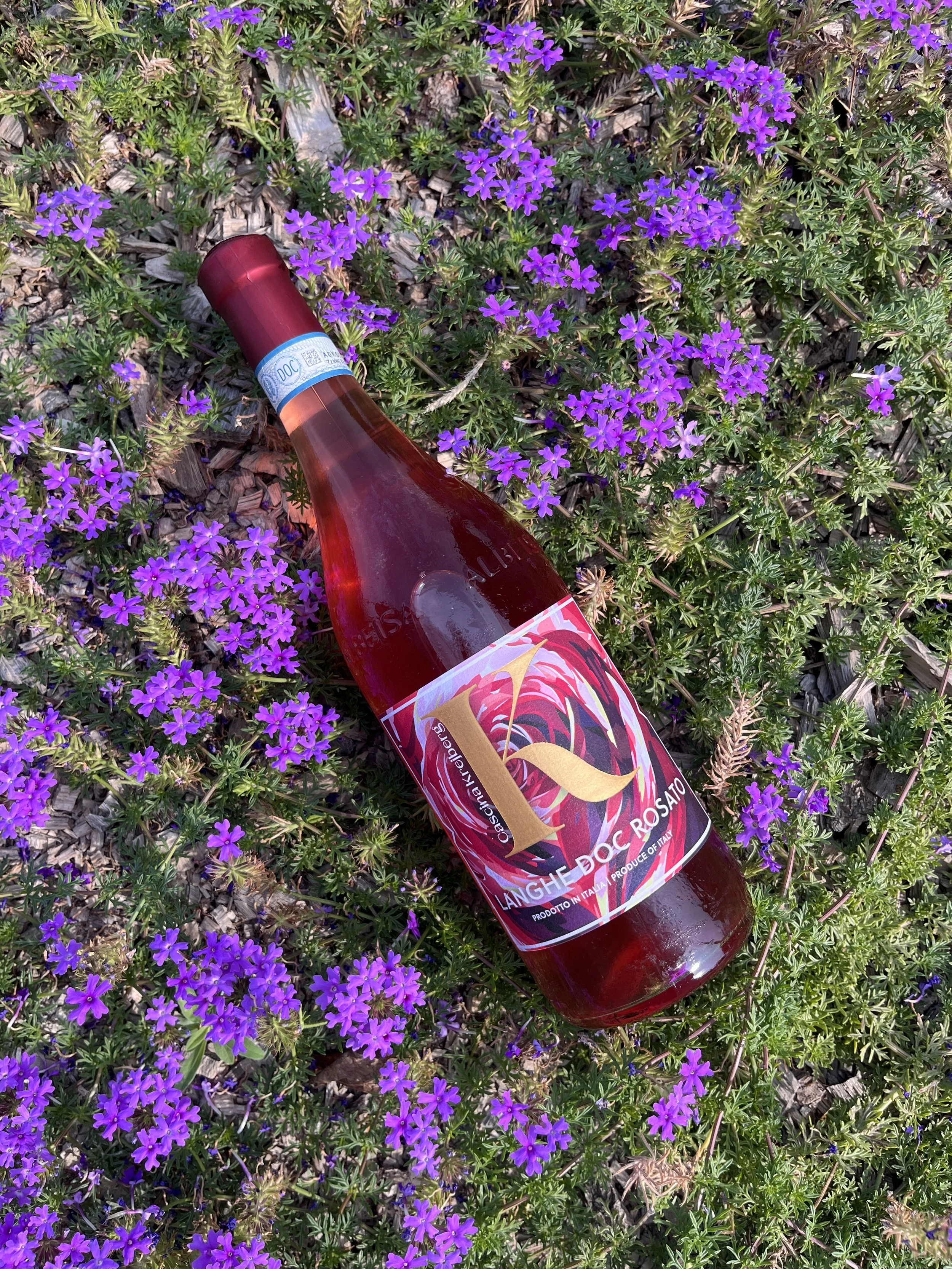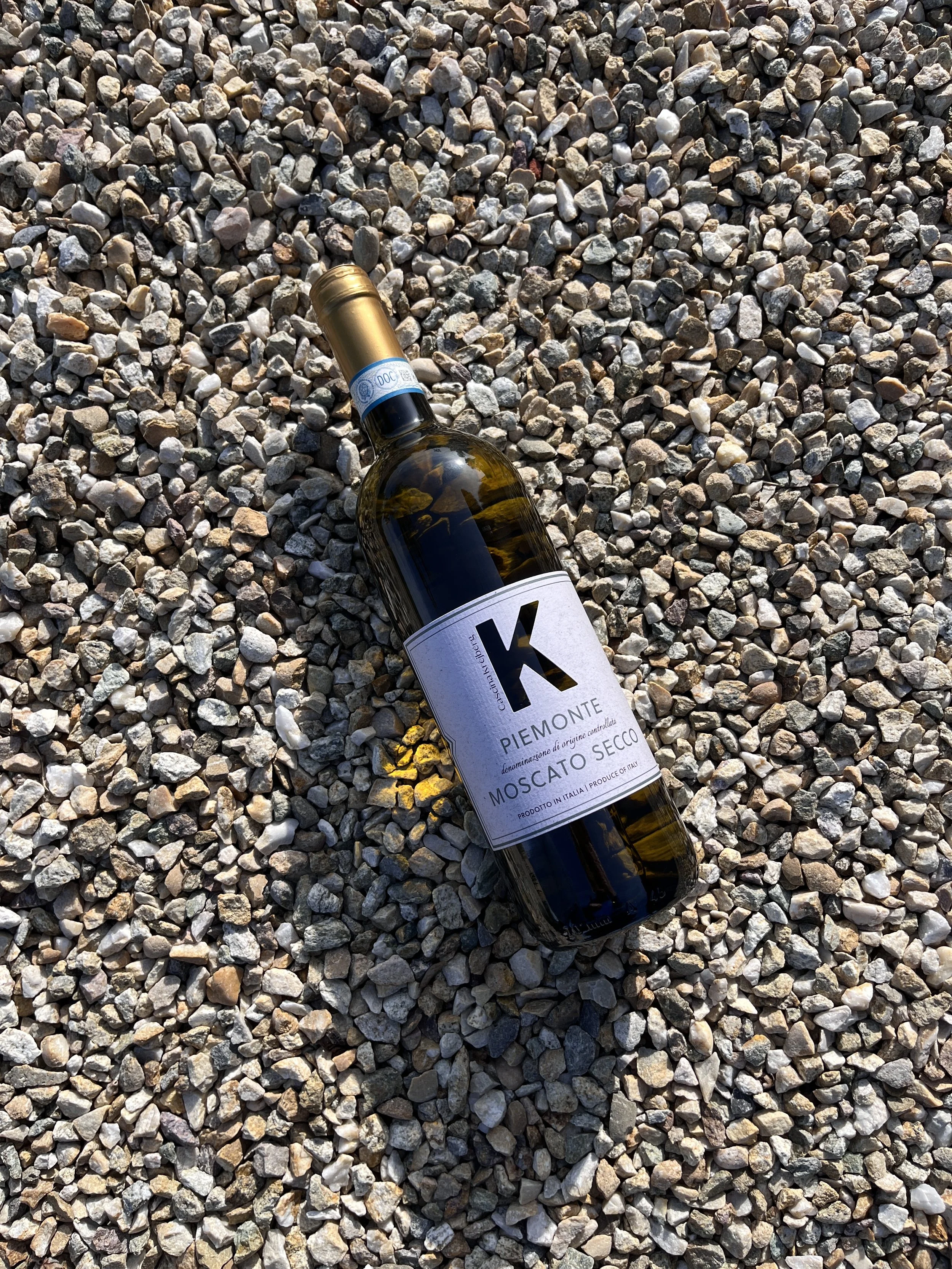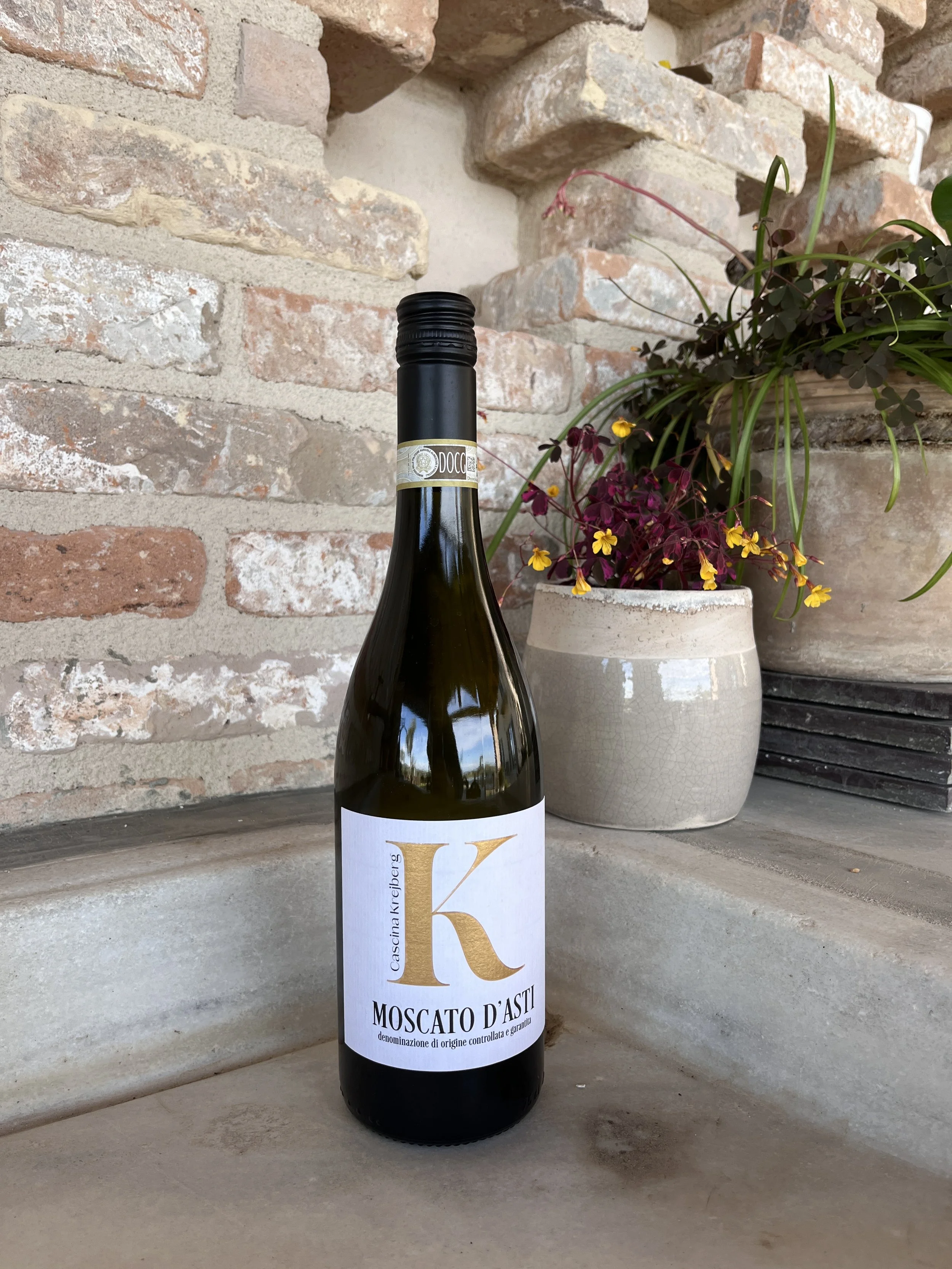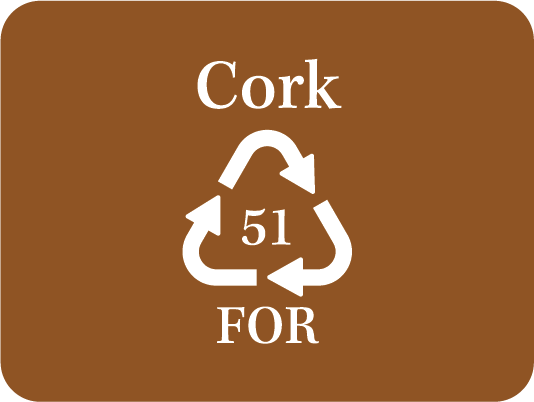
Barbera D'Asti Superiore 2021
-
The Barbera is one of the most popular red varieties not only in Piedmont but also in all Italy. Thanks to its high acidity and low polyphenol content it has become the beloved every day wine of the Piedmontese households to pair with food. The first known quotation about Barbera dates back to 1514 and refers to the area of Chieri, a small town near Turin. Yet the variety had a limited circulation in the following century. Only in 1691 there is a reference related to the village of Neive, where the count Cotti Ceres planted few vines of Barbera. In 1798 Barbera was reported by the Count Nuvolone among the “first quality grapes” grown in Asti surroundings and in the Frascheja (the plain of Alessandria). Only since mid-nineteenth’s, perhaps because of the arrival of powdery mildew, the culture of Barbera gradually became (and still is) dominant among Piedmont’s red wine grapes. 14 000 ha or 35% of all vineyards in Piedmont are planted with Barbera, from Alto Piemonte to Gavi and from Pinerolo to Tortona. Barbera is also widely grown in Lombardy, there are some vineyards also in Emilia-Romagna, Umbria and even Basilicata.
-
Cascina Krejberg's own Barbera vineyard is still young (planted in 2021) so for the time being we source the grapes from a friend's vineyard also in Monferrato zone, not far away from ours. This is an old vineyard, planted in 1968 on an East facing slope. The soils are predominantly clay with a low percentage of sand, lime and slate inclusions.
-
Barbera is one of the varieties that suffers most from the climate changes. Unlike the other main local red varieties - Nebbiolo and Dolcetto, that when they reach maturity, stop accumulating sugars, Barbera goes on until it physically “bursts”. High temperatures accelerate sugar accumulation, there have been registered cases of Barbera reaching 17%+ of potential alcohol. Having excessive acidity Barbera doesn’t lose it so fast, so winegrowers are forced to keep it on the vines. This vineyard is surrounded on 2 sides by a forest thus it remains cooler and Barbera matures more homogenously. After harvest the grapes are destemmed and fermented in a stainless steel vat, where they remain with the skins for 1 month. After pressing the wine is aged for 20 months in old French oak tonneaux (500 l) for 20 months.
-
2021 is called the "year of the restart" after nearly 2 years of lockdowns. In spring various perturbations were recorded with temperatures dropping below zero in mid April and generally cooler weather than lately. Abundant precipitations followed in summer and the risk of fungus diseases raised up with them. The thermoindexes in general were lower than the previous 2 years.
-
In Piedmont Barbera is the every day food wine. Due to its high acidity it pairs particularly well with fat meat and elaborate meat dishes. It also goes well with pizza and nearly all types of pasta. The oak aged Barberas with some years in bottle also go well with hard cheeses.
Langhe DOC Rosato 2023
-
The Barbera is one of the most popular red varieties not only in Piedmont but also in all Italy. Thanks to its high acidity and low polyphenol content it has become the beloved every day wine of the Piedmontese 60% Nebbiolo, 40% Freisa. The Nebbiolo is one of the most well-known grape varieties of Piedmont, the one that contributes to the world fame of Italian wines. King of the Langhe, capable of producing unique, rich and age worthy red wines. The Freisa is an ancient grape variety with unclear origin, now mostly found in the Monferrato and Chieri zones in Piedmont, in the Langhe area it’s nearly extinct. Genetically the Freisa is proved to be a Nebbiolo’s offspring and also a «cousin» of the French Viognier. In 2017 we celebrated 500 years since the first mention of the variety name was documented while in 2026 we’ll celebrate 760 years since the first mention of Nebbiolo.
-
In 2023 Cascina Krejberg opened its winery and cellar door in Neive, one of the villages in the Barbaresco DOCG area with the intention to produce also the famous wines from this zone, apart from processing its own grapes from Monferrato. For that purposes a contract with a local winegrower was concluded that provided the grapes for our first Langa wines: a Langhe Rosé, a Langhe Nebbiolo and a cru Barbaresco. The grapes for the Rosé come also from a cru area in Neive village: while the Freisa vineyard has a full West exposition, the Nebbiolo one is slightly inclined to the North and the grapes can’t be used for Barbaresco. Both vineyards have been planted in 1978.
-
That’s our first try to make a low intervention rosé wine (our winery and own vineyards are officially certified as organic / bio since 2024). No artificial cooling and a minimum of additives were used during its production. The wine was decanted before bottling (i.e. not filtered), so before opening the bottle it’s recommended to keep it standing up in a fridge overnight in order for the eventual fine lee particles to deposit on the bottle’s bottom. The wine was also bottled fresh, without “pushing out” the CO2 out of it, so some light fizziness can be detected.
-
An abnormal climate pattern over the year led up to the 2023 harvest, featuring a long period of drought. A cold, prolonged and rainy winter was followed by a dry spring and cooler than usual May and June. On July 6 a major hailstorm hit parts of the Langhe damaging many crops. After that event the temperatures rose up and kept at a higher than usual level throughout the rest of the summer and until harvest.
-
All over the world rosé wines are considered the perfect summer aperitive and have gained ever increasing popularity due to their unbeatable “instagramability” in combination with ‘blue’ water (sees, lakes, pools etc.). But they also go well with food, like meat carpaccio or vitello tonnato. The rosé makes a striking match with blue cheeses (like Gorgonzola) and red fruits (strawberries, peaches, cherries, wild berries).
-
Alc.vol.: 12,71%
Total acidity: 5,59 g/L
Residual sugars: 0,10 g/L
Dry extract: 20,8 g/
Total SO2: 150 mg/L
Wine technical sheets
Moscato Secco DOCG 2021
-
The Moscato or Muscat is one of the most ancient varieties in the world, its popularity is due mainly to its distinctive and easily recognizable aromatics and its capability of producing amazing sweet wines with very long aging potential. One of the popular contemporary clones is named after the ancient Egyptian city of Alexandria, an evidence that mankind has been cultivating it for thousands of years. Nowadays Piedmont is the place on Earth with the largest Muscat vineyards planted on nearly 10 000 ha. The local clone is named after Canelli, a small city the province of Asti where Cascina Krejberg's vineyards are situated. The popularity of Muscat in Piedmont rose in the beginning of the XX century when local winemakers started to produce a wine named „Asti Champagne”. Shortly after it became the base wine for vermouth production, such as Martini. Soon winemakers found out that Champagne style wines out of Muscat remained quite bitter and with the invention of Martinotti (or Charmat) method the production of several types of sweet sparkling wines was established and then perfected with the years.
-
The grapes have been sourced from Cascina Krejberg's own vineyard, situated in Canelli. It was planted between 1942 and 1978, one part, facing Sout-East - with Moscato di Canelli and the second part, facing North - with Moscato di Alessandria. The wine is blend of both varieties.
-
The production of dry Muscat may also face the problem of residual bitterness. Therefore special techniques to avoid that are implemented both in the vineyard and the winery. In the vineyard vies are partially defoliated in August in order to expose the ripening grapes to the direct sunlight that diminishes the quantity of terpenes in the grape – the substances that are responsible for the typical Muscat aroma and for the bitter taste. In the winery, the Moscato di Alessandria starts fermenting “in orange” (with the skins) then after one week is pressed and finishes fermentation in a used oak barrel. Meanwhile the Moscato di Canelli is fermented “in white” (without the skins) but in new oak barrels. Both wines are kept in their respective barrels for 10 months, then they are blended and bottled.
-
2021 is called the "year of the restart" after nearly 2 years of lockdowns. In spring various perturbations were recorded with temperatures dropping below zero in mid April and generally cooler weather than lately. Abundant precipitations followed in summer and the risk of fungus diseases raised up with them. The thermoindexes in general were lower than the previous 2 years.
-
In Greece, one of the biggest producers of dry Muscat, the locals drink it with nearly every dish but particularly like it with lamb in its various forms - grilled, baked, stewed etc. It also matches well meat ravioli as well as elaborate fish dishes, Due to its high acidity it can also be consumed as an aperitive.
-
Alc.vol.: 13,8%
Total acidity: 6,17 g/L
Residual sugars: 0,53 g/L
Dry extract: 20,6 g/L
Total SO2: 130 mg/L
Langhe DOC Nebbiolo 2023
-
The Nebbiolo is the King of the Langhe, renowned all over the world for the unique, rich and age-worthy wines that it can produce. It’s variety that shows best all the differences between the places where it grows.
-
In 2023 Cascina Krejberg opened its winery and cellar door in Neive, one of the villages in the Barbaresco DOCG area with the intention to produce also the famous wines from this zone, apart from processing its own grapes from Monferrato. For that purposes a contract with a local winegrower was concluded that provided the grapes for our first Langa wines: a Langhe Rosé, a Langhe Nebbiolo and a cru Barbaresco. The grapes for the Langhe Nebbiolo come also from a young vineyard in a cru area in Neive village that’s not yet classified to produce Barbaresco. Planted in 2016 on a hill facing South.
-
The fermentation took place in a stainless-steel tank without temperature control. After its end a short one-week maceration on the skins was performed, then the wine was pressed and transferred into regenerated French oak barriques (that generally has less ‘woody’ impact on wines) where the malolactic fermentation was accomplished. After racking off the lees the wine stayed in the same barrels for another 10 months.
-
An abnormal climate pattern over the year led up to the 2023 harvest, featuring a long period of drought. A cold, prolonged and rainy winter was followed by a dry spring and cooler than usual May and June. On July 6 a major hailstorm hit parts of the Langhe damaging many crops. After that event the temperatures rose up and kept at a higher than usual level throughout the rest of the summer and until harvest.
-
Nebbiolo goes particularly well with all kinds of meat, boiled, stewed, grilled or BBQ-ed as well as carpaccio and carne cruda, pasta with red meat sauces. It’s also known for its heavenly match with dishes made using the white truffle of Alba.
-
Alc.vol.: 14,33%
Total acidity: 5,33 g/L
Residual sugars: 0,26 g/L
Dry extract: 29,1 g/L
Total SO2: 112 mg/L
Moscato D’Asti 2022
-
The Moscato or Muscat is one of the most ancient varieties in the world, its popularity is due mainly to its distinctive and easily recognisable aromatics and its capability of producing amazing sweet wines with very long aging potential. One of the popular contemporary clones is named after the ancient Egyptian city of Alexandria, an evidence that mankind has been cultivating it for thousands of years. Nowadays Piedmont is the place on Earth with the largest Muscat vineyards planted on nearly 10 000 ha. The local clone is named after Canelli, a small city the province of Asti where Cascina Krejberg's vineyards are situated. The popularity of Muscat in Piedmont rose in the beginning of the XX century when local winemakers started to produce a wine named „Asti Champagne”. Shortly after it became the base wine for vermouth production, such as Martini. Soon winemakers found out that Champagne style wines out of Muscat remained quite bitter and with the invention of Martinotti (or Charmat) method the production of several types of sweet sparkling wines was established and then perfected with the years.
-
The grapes have been sourced from Cascina Krejberg's own vineyard, situated in Canelli. It was planted between 1942 and 1978, one part, facing Sout-East - with Moscato di Canelli and the second part, facing North - with Moscato di Alessandria. Only the Canelli variety is used for the production of this wine.
-
The production of sweet sparkling Muscat wines requires special techniques and high tech facilities. After harvest the grapes are pressed, the obtained must is microfiltered and then kept at very low temperatures without fermentation. The latter happens throughout the year, usually about 3 weeks before the next bottling. It takes place in closed vats called „autoclave” that are sealed at a certain point in order to keep the CO2, produced by the yeast, inside the wine. Fermentation is stopped by abrupt cooling down when the needed pressure and the desired quantity of residual sugars are reached. Then the sparkling wine passes through isobaric filters in order to get rid of the dead yeast cells - the so called lees, formed during fermentation, and is bottled.
-
The 2022 was the dryest year on record with the highest temperatures during July & August since times unknown. The season was quite stressful for the vineyards, we had to change some methods in order to protect the vines as much as possible from the draught and the heat, like leaving the grass grow under the vines & between the rows as well as not performing the traditional defeuillage in August.
-
The Moscato d'Asti is known to be the preferred festive wine of the Italians especially for Christmas and Easter. It's also a good aperitive in summer and undoubtedly goes well with most of the desserts. Lately it also gains popularity with Asian or fusion kitchens, especially with spicy dishes or ones that contain sour & sweet sauces.
-
Alc.vol.: 4,90%
Total acidity: 5,09 g/L
Residual sugars: 129,2 g/L
Dry extract: 18,1 g/L
Total SO2: 93 mg/L
Barbera D'Asti Superiore 2023
-
The Barbera is one of the most popular red varieties not only in Piedmont but also in all Italy. Thanks to its high acidity and low polyphenol content it has become the beloved everyday wine of the Piedmontese households to pair with food. The first known quotation about Barbera dates back to 1514 and refers to the area of Chieri, a small town near Turin. Yet the variety had a limited circulation in the following century. Only in 1691 there is a reference related to the village of Neive, where the count Cotti Ceres planted few vines of Barbera. In 1798 Barbera was reported by the Count Nuvolone among the “first quality grapes” grown in Asti surroundings and in the Frascheja (the plain of Alessandria). Only since mid-nineteenth’s, perhaps because of the arrival of powdery mildew, the culture of Barbera gradually became (and still is) dominant among Piedmont’s red wine grapes with 14 000 ha (35%) of all vineyards in Piedmont. The Freisa, that started to make part of this wine since 2023 vintage is a Nebbiolo’s offspring, first mentioned in 1517.
-
Cascina Krejberg's own Barbera vineyard was planted in 2021. Four clones of Barbera – one historical and 3 new ones - make 90% of it, while the remaining 10% are planted with Freisa as the Barbera d’Asti production rules permit. Planting Barbera and Freisa together has been a regular practice both in Monferrato and Langhe areas. It’s believed that the Freisa, harvested together with the Barbera but being slightly later ripening variety, contributes to the wine’s freshness by lowering the final alcohol content, by adding some floral and red fruit notes as well as by enhancing the tannic structure of the wine. Due to the low yields in the first year one part of the grapes was acquired from a neighbor across the hill from our estate so the final percentage of Freisa in the wine is 2,7%.
-
Barbera is one of the varieties that suffers most from the climate changes. Unlike the other main local red varieties - Nebbiolo and Dolcetto, that when they reach maturity, stop accumulating sugars, Barbera goes on until it physically “bursts”. High temperatures accelerate sugar accumulation, there have been registered cases of Barbera reaching 17%+ of potential alcohol. Having excessive acidity Barbera doesn’t lose it so fast, so winegrowers are forced to keep it on the vines. In this particular case our own Barbera was picked together with the Freisa 20 days before the neighbor’s grapes. Thus, the resulting wine after blending the two lots has less alcohol but high acidity. The wine was fermented and briefly macerated in bins and after pressing it was transferred into regenerated French oak barrels, where it stayed for 10 months.
-
An abnormal climate pattern over the year led up to the 2023 harvest, featuring a long period of drought. A cold, prolonged and rainy winter was followed by a dry spring and cooler than usual May and June. On July 6 a major hailstorm hit parts of the Langhe damaging many crops. After that event the temperatures rose up and kept at a higher than usual level throughout the rest of the summer and until harvest.
-
In Piedmont Barbera is the everyday food wine. Due to its high acidity, it pairs particularly well with fat meat and elaborate meat dishes. It also goes well with pizza and nearly all types of pasta. The oak aged Barberas with some years in bottle also go well with hard cheeses.
-
Alc.vol.: 14,19%
Total acidity: 7,01 g/L
Residual sugars: 1,6 g/L
Dry extract: 26,8 g/L
Total SO2: 122 mg/L
Garbage management
Glass bottle of any colour and shape
Glass collection
Natural or composite cork stopper
Dedicated separate collection
Polylaminate capsules - aluminium
Aluminium collection
Cardboard
Paper collection
Beehives with internal wave/ in stretch cardboard
Paper collection
The label affixed to the front and back of bottles are not subject to separate disposal from the glass bottle
Polyvinyl chloride capsules
Plastic collection












